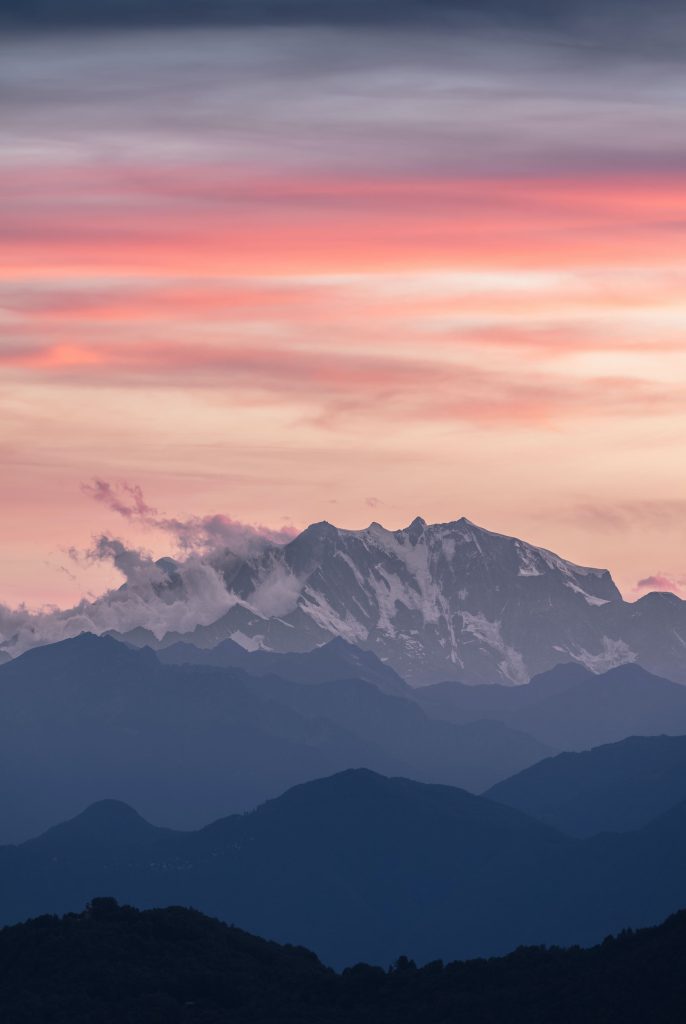Mahakaleshwar Jyotirlinga, located in the ancient city of Ujjain, Madhya Pradesh, is one of the 12 Jyotirlingas in India, which are considered the most sacred abodes of Lord Shiva. This temple is not only a significant pilgrimage site for Hindus but also a symbol of timeless spirituality and divine power. The name “Mahakaleshwar” translates to “Lord of Time” (Mahakal), signifying Shiva’s control over time and destiny.
Significance of Mahakaleshwar Jyotirlinga
- One of the 12 Jyotirlingas: Mahakaleshwar is one of the 12 Jyotirlingas, which are believed to be self-manifested forms of Lord Shiva. Each Jyotirlinga represents the infinite nature of Shiva.
- Dakshinamurti: The idol of Mahakaleshwar is unique as it faces south, a form known as Dakshinamurti. This is considered highly auspicious and powerful.
- Destroyer of Evil: Mahakaleshwar is revered as the protector of devotees and the destroyer of evil forces. It is believed that worshipping here liberates one from the cycle of birth and death.
- Historical and Spiritual Importance: The temple has been mentioned in ancient Hindu scriptures like the Puranas and has been a center of devotion for centuries.

Legend of Mahakaleshwar Jyotirlinga
The origin of Mahakaleshwar Jyotirlinga is associated with several legends:
- The Story of King Chandrasena:
According to legend, King Chandrasena of Ujjain was a devoted follower of Lord Shiva. When a demon named Dushana attacked Ujjain, Shiva emerged from the earth in the form of Mahakaleshwar to protect the city and his devotee. The Jyotirlinga is believed to have self-manifested at this spot. - The Tale of Shrikhar and Vridhi:
A young boy named Shrikhar and a priest named Vridhi prayed to Lord Shiva to save Ujjain from the demon Dushana. Pleased with their devotion, Shiva appeared as Mahakaleshwar and destroyed the demon. - The Curse of Lord Brahma:
Another legend states that Lord Shiva appeared as Mahakaleshwar to humble Lord Brahma, who had become arrogant about his power of creation. Shiva’s emergence as the “Lord of Time” reminded Brahma of the impermanence of life.
Architecture of the Temple
The Mahakaleshwar Temple is a masterpiece of Maratha architecture, with intricate carvings and a towering spire. The temple complex is divided into several sections:
- Garbhagriha (Sanctum Sanctorum): Houses the main Shiva Lingam, which is believed to be Swayambhu (self-manifested).
- Shikhar (Spire): The temple’s spire is adorned with sculptures and carvings depicting scenes from Hindu mythology.
- Kunda (Water Tank): The Koti Tirtha tank within the temple premises is considered sacred, and devotees take a dip here before offering prayers.
- Bhasma Aarti: One of the most unique rituals performed at the temple is the Bhasma Aarti, where the Shiva Lingam is adorned with ashes from the funeral pyre. This ritual symbolizes the cycle of life and death.
Rituals and Festivals
- Bhasma Aarti:
The most famous ritual at Mahakaleshwar, performed early in the morning. Devotees gather to witness the Lingam being adorned with sacred ashes. - Maha Shivaratri:
Mahakaleshwar Temple sees a massive influx of devotees during Maha Shivaratri. The temple is decorated, and special prayers and rituals are conducted throughout the night. - Shravan Month:
The month of Shravan (July-August) is considered highly auspicious for Shiva worship. Thousands of devotees visit the temple during this time. - Nitya Pooja:
Daily rituals include Abhishekam (ritual bathing of the Lingam), Rudrabhishek, and Maha Pooja.
How to Reach Mahakaleshwar Temple
- By Air: The nearest airport is Devi Ahilya Bai Holkar Airport in Indore, about 55 km from Ujjain.
- By Train: Ujjain Junction is well-connected to major cities like Delhi, Mumbai, and Ahmedabad.
- By Road: Ujjain is easily accessible by road from cities like Indore, Bhopal, and Ahmedabad.
Best Time to Visit
- The best time to visit Mahakaleshwar Temple is during Maha Shivaratri (February-March) and the month of Shravan (July-August).
- The weather in Ujjain is pleasant from October to March, making it ideal for pilgrimage.
Nearby Attractions
- Ram Ghat: A sacred ghat on the banks of the Shipra River, where devotees take a holy dip.
- Kal Bhairav Temple: Dedicated to the fierce form of Lord Shiva, located near Mahakaleshwar.
- Harsiddhi Temple: A Shakti Peetha dedicated to Goddess Annapurna.
- Sandipani Ashram: An ancient ashram associated with Lord Krishna’s education.
Om Namah Shivaya!








skht
As a devoted Srikalahasti resident, I have a strong desire to showcase the growth, beauty, and culture of our community. My objective is to offer the people of Srikalahasti insightful knowledge and useful insights, with an emphasis on civic involvement, local governance, and community well-being. I want to use this platform to raise awareness of important topics, provide updates on social and political developments, and highlight our region's rich history. By working together, we can create growth and progress for everyone and work toward a better future for Srikalahasti.
నేను శ్రీకాళహస్తి నియోజకవర్గానికి చెందిన ఒక ప్రగాఢ ఆసక్తి కలిగిన స్థానిక వాసిని. మా ప్రాంత సౌందర్యం, సాంస్కృతిక విలువలు మరియు అభివృద్ధి పట్ల నాకున్న ప్రేమతో ఈ నియోజకవర్గం గురించి ప్రజలకు విలువైన సమాచారం అందించడమే నా లక్ష్యం. ఈ వేదిక ద్వారా, సమాజానికి సంబంధించిన ముఖ్యమైన సమస్యలు, రాజకీయ మరియు సామాజిక సంఘటనలపై తాజా సమాచారం మరియు మా నియోజకవర్గంలోని సాంప్రదాయ సంపదను ప్రజలతో పంచుకుంటాను. మనందరం కలిసి శ్రీకాళహస్తి యొక్క భవిష్యత్తును మరింత మెరుగుగా తీర్చిదిద్దేలా కృషి చేద్దాం.!
1 thought on “Mahakaleshwar Jyotirlinga: The Eternal Abode of Lord Shiva”